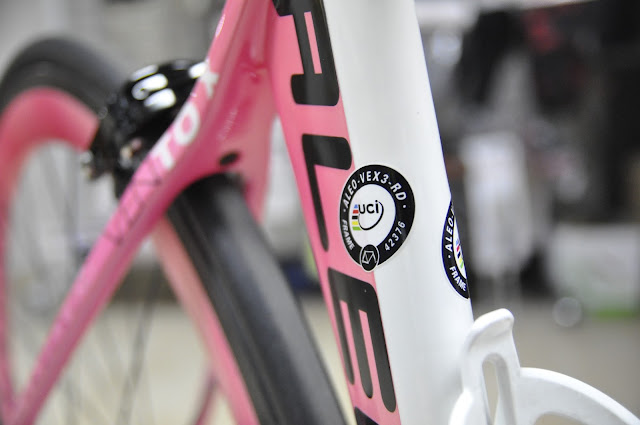< Carbon Fiber Construction >
The properties of carbon fiber, such as high stiffness, high tensile strength, low weight, light temperature tolerance and low thermal expansion, make them very popular in aerospace, military, motor racing, along with other competition sports including cycling.
Most bikes are made with aluminium or steel which are more affordable and also more durable. But these types of bikes do have their downsides as well, they are heavy and prone to rust.

An image showing a simple steel frame
Carbon Fiber on the other hand, is significantly lighter and stiffer. And a different layup of carbon fiber threads can result in different weaves of carbon with different properties (flex and strain)
That is why for Aleoca's High Performance Bikes, the frames and components are made of full carbon fiber in different layups of carbon. (Like many bikes in the market today)
The different types of carbon weave are mainly 3K, 12K, 1K and UD (Uni Directional). Plenty others exist but these are the common ones that the bikes here utilize.
The different weave numberings, (3K, 12K, 1K etc.) refer to the different woven fabrics that make carbon versatile to work with. Typically bunches of carbon fiber strands (yarn) are woven bi-directionally (weft and warp). The manner in which the weft and the warp are interwoven is the weave pattern. - (Windsail Bike, Carbon Fiber Explained, 2015)
Different carbon layups are used on different parts of the bike to optimize the riding experience. For example, a stiffer carbon at the bottom bracket (pedal area) so that all the power is transferred etc.
I have gotten a chance to tune some of the high end carbon bikes and also assembled a set of carbon fiber wheels.
The bike on the top is a Time Trial Bike, used in Time Trial Races or Triathlons. Aleoca produces this bike with UD Uni Directional Carbon. This bike is primarily built with optimal aerodynamics.
Here are a pair of custom built Carbon Wheels that are laced with Ceramic bearings. I got to assemble these wheels and help install them on a bike.
These wheels are really deep (The length of the profile) as they are built to be aerodynamic. Yet they are still very light as they are fully carbon.
Installation includes placing the inner tube and tire on, and also fastening the caps of the hub and also the quick release.
In the process of installing the carbon wheels
Overall, the engineering behind carbon fiber is truly amazing. How thin strands of carbon thread can combine and take the weight of a rider at high speed and even other extreme cases is truly amazing.
It is important to understand different types of materials and their properties before placing them together or building them.
More to come in the next post!















